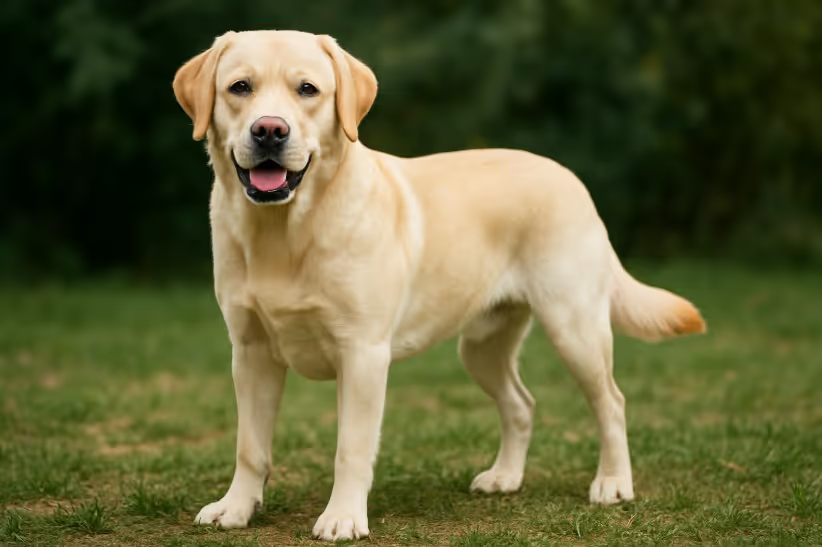Labrador Retrievers are friendly, intelligent, and outgoing dogs with a reputation for being among the most versatile and loyal companions. Originally bred for retrieving waterfowl, Labs are now beloved family pets, service animals, and hunting partners. Their eagerness to please, combined with gentle temperament and high energy levels, makes them ideal for active households and first-time dog owners alike.

The Labrador Retriever originated in Newfoundland, Canada in the 1800s. Bred from St. John’s Water Dogs and imported to England, they became favorites among British hunters for their excellent retrieving skills, intelligence, and waterproof coat. Officially recognized by the AKC in 1917, Labs have held the title of the most popular dog breed in North America for over two decades, thanks to their trainability and versatility.
How to Groom a Labrador Retriever:
🧼 Recommended Products:
🎥 Suggested Video:
Labrador Retrievers are extremely energetic and thrive on physical and mental stimulation. Without adequate exercise, they are prone to boredom and obesity.
Minimum Daily Activity: 60–90 minutes
Ideal Activities:
⚠️ Lack of activity can lead to weight gain and behavioral issues such as chewing, excessive barking, or digging.
Labs are among the most trainable breeds, ideal for both first-time and experienced dog owners.
Training Best Practices:
Common Behavior Challenges:
🧠 Include brain games like treat puzzles, scent work, and obedience drills to keep their minds sharp.
Labradors love food—sometimes too much—so diet control is crucial.
Adult Feeding Schedule: 2 meals per day
Amount: 2.5–3 cups of high-quality dry food daily
Puppies: Feed 3–4 times a day until 6 months old
Nutritional Needs:
Recommended Supplements:
Top Adoption Sources:
What to Ask a Breeder:
Avoid breeders who can’t provide health clearances or who push “rare colors” like silver Labs as premium—these are not recognized officially.
Q: Are Labrador Retrievers good family dogs?
A: Yes, they are patient, affectionate, and great with kids and other pets.
Q: Do Labs shed a lot?
A: Yes, heavily—especially in spring and fall. Regular grooming helps manage this.
Q: Are Labradors good apartment dogs?
A: They can adapt, but need plenty of exercise and daily walks. A house with a yard is ideal.
Q: How long do Labradors live?
A: 10–12 years, though many reach 13+ with proper care.
Q: What are common health concerns?
A: Hip and elbow dysplasia, obesity, ear infections, and progressive retinal atrophy (PRA).
Q: Do Labs like to swim?
A: Absolutely—they’re natural swimmers with water-resistant coats and webbed paws.